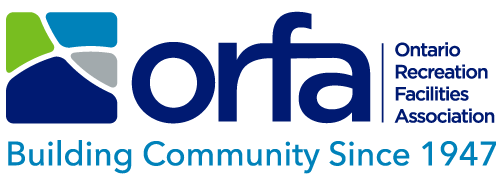- ORFA Home
- Resource Centre
- Technical Corner
- Off-Season Recreation Grounds Risk Care & Control
Technical Corner
Off-Season Recreation Grounds Risk Care & Control
November 20, 2023
Introduction
Recreation experiences will often shift with the seasons. These changes in patterns are typically driven by temperature and the desire to remain active. Many recreation departments transition with the seasons as well with staff taking on the related tasks and responsibilities associated with the change in recreational service provision. Facility managers must assess their operations to determine if they have put the necessary resources in place to either secure areas, infrastructure and/or equipment from use. This is not always simple or economical to achieve but is a critical management responsibility.
Managing Grounds Facilities
The first step in achieving grounds infrastructure care and control is to create an inventory that identifies all grounds assets that are under the care and control of the department. It is important that facility management treat all recreation assets with the same respect. A reminder that “the ORFA considers a recreation facility as “any land, premise, location or thing at or upon which offers a recreation or leisure experience for all”. The ORFA offers all current members unrestricted access to the Recreation Facility Asset Management (RFAM) software program to collect data on all related infrastructure and equipment. Once the standard information is collected, facility management should then assign an operational schedule for each identified asset. For example, all sports fields shall be opened by May 1st and closed on October 1st each year. This provides critical budgetary information which will then drive the necessary staffing levels to provide this service. It is essential that facility management identify any staffing gaps that may occur when existing staff move away from warm weather responsibilities to inside recreational responsibilities. Consider staff that are responsible for sports field operations and then have winter ice installation and operations added to the work schedule with no additional staff. This creates an operational gap that can expose the department to legal liability.
Operational Due Diligence Assessment
The simplest “due” diligence evaluation is to determine if the asset can be used without restriction during off-season periods. For example, if a playground area which is maintained during warm weather months continues to have equipment accessible for use in the off-season, then the same level of care and control must be in place during off-season months. To reduce or eliminate the risk of liability, the asset must either be maintained or secured from use.
Signage Has Limited Risk Reduction Value
Facility management must learn to appreciate that all signage is merely one tool in a risk management toolbox. Posting a sign that indicates that the area is closed for the season, not maintained or to use at your own risk may have some recognition should a person of the age of majority bypass the sign and use the area. It has little value in deflecting risk if the person is considered a child by the courts. Placing signage takes critical thinking to ensure proper wording and placement. In addition, a schedule of recorded inspection to ensure the area remains secure and properly signed must be in place. Reaching out to the operations insurance carriers risk reduction department to help design an operational risk reduction strategy is strongly recommended.
Grounds Operations Are Workplaces
Ontario’s recreational grounds infrastructure is a workplace that must be considered as part of the overall obligations of the Occupational Health and Safety Act. Inspection requirements of buildings, play structures and equipment are easily defined. However, the ongoing inspection of other living green areas such as trails, and other natural greenspace areas is more complicated. Additional recreational spaces that require facility management to consider if sufficient resources are in place to effectively operate and manage them include sliding areas, outdoor skating sheets, retention ponds and marinas. Workers must be properly trained to work in extreme weather conditions and prepared to respond to other emergency type situations related to the work.
Conclusion
It is recognized that today’s facility managers are under extreme pressure to work within restrictive financial controls. Facility managers do not have the luxury of underperforming because of such restrictions. Facility managers must attempt to do what they can with the provided resources but are also responsible to advise those who are in administrative control of the department of any known gaps in meeting what might be considered reasonable industry best practices. Proactive facility management includes the ability to raise awareness, provide direction on how risk might be reduced and do as much as possible with the provided resources.
Comments and/or Questions may be directed to Terry Piche, CRFP, CIT and Director, Training, Research and Development, Ontario Recreation Facilities Association
|
Note: The publisher, (Author(s)/General Editor(s)/Licensor(s)) and every person involved in the creation of this communication shall not be liable for any loss, injury, claim, liability or damage of any kind resulting from the use of or reliance on any information or material contained in this communication. While every effort has been made to ensure the accuracy of the contents of this communication, it is intended for information purposes only. When creating this communication, none of the publisher, the (Author(s)/General Editor(s)/Licensor(s)) or contributors were engaged in rendering legal or other professional advice. This communication should not be considered or relied upon as if it were such advice. If legal advice or expert assistance is required, the services of a competent professional should be sought and retained. The publisher and every person involved in the creation of this communication disclaim all liability in respect of the results of the any actions taken in reliance upon information contained in this communication and for any errors or omissions in the works. They expressly disclaim liability to any user of the work. |
